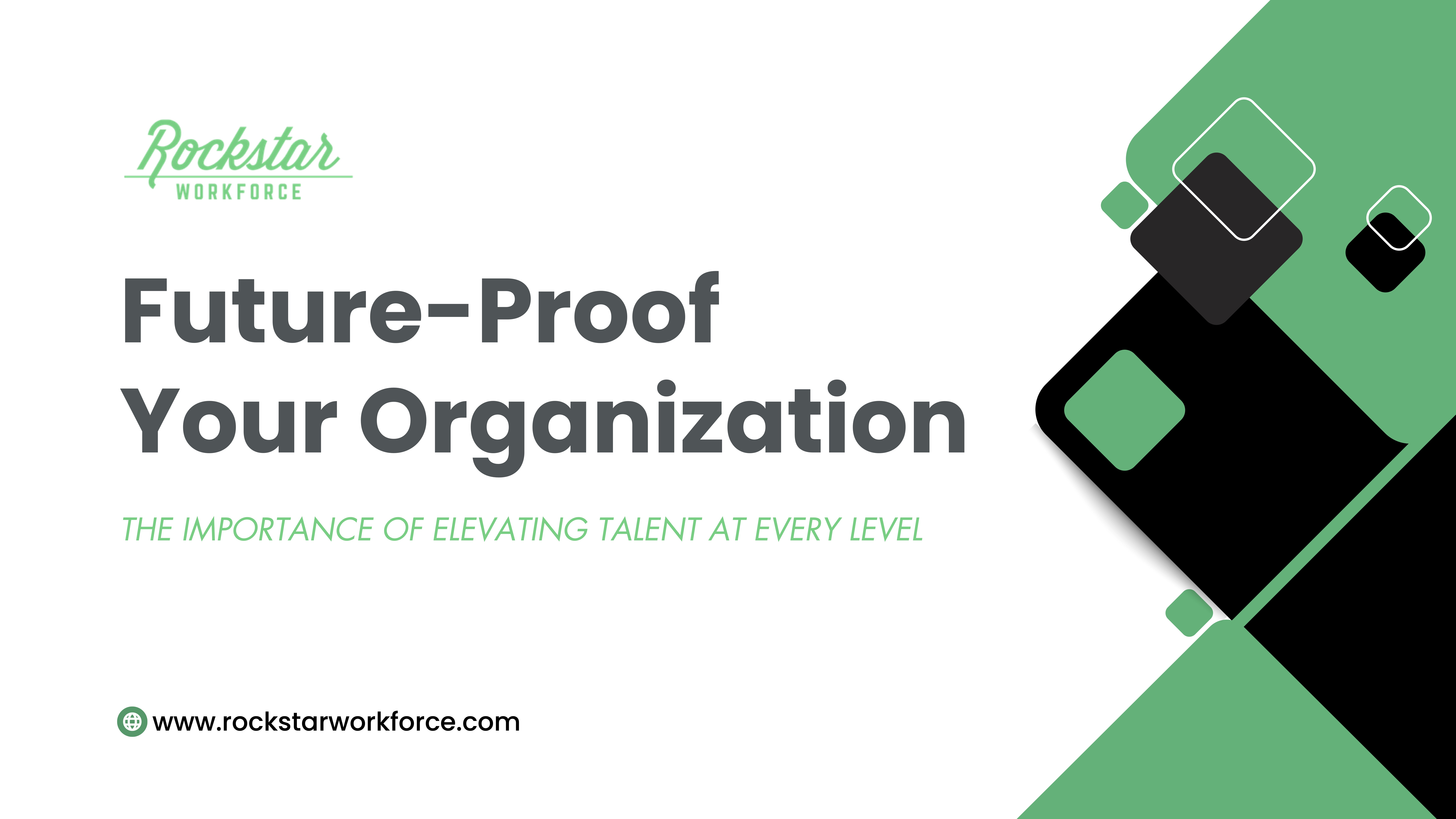Introduction
In today’s highly competitive business landscape, success hinges not just on the strategies you employ to sell your products or manage your operations, but fundamentally on the people who implement these strategies. Like any crucial aspect of your business, your workforce requires a systematic approach to nurture and maximize its potential. This is where the concept of a “Talent Growth Strategy” (TGS) comes into play. Serving not merely as a component of your business strategy but as a foundational pillar that can distinguish your company as a leader in its field.
Understanding the Talent Growth Strategy
The TGS is a comprehensive and holistic plan designed to cultivate and nurture the skills, capabilities, and potential of employees at every level of your organization. By addressing both individual and organizational needs, the TGS provides a strategic framework that fosters mutual growth, benefiting both employees and your company. This dual-focus strategy ensures that talent development is not only a driver of individual progress but also a key factor in achieving the company’s overarching objectives.
The Business Case for Investing in Talent
Investing in talent goes beyond being an HR function; it is a strategic business decision that yields substantial dividends. Organizations that prioritize comprehensive training and development programs can reap significant rewards. The upside ranging from improved employee engagement and retention to heightened profitability and productivity. Such investment strengthens the overall organizational culture, fostering an environment of continuous learning and growth. This, in turn, creates a cycle of positive outcomes that benefit both the employees and the organization.
Studies consistently show that companies that make concerted efforts to develop their workforce enjoy higher levels of engagement. This can also translate into tangible financial benefits. For instance, a Gallup study found that companies with highly engaged workforces outperform their peers by 147% in earnings per share. This demonstrates the direct correlation between employee engagement and overall financial success. Furthermore, engaged employees tend to be more productive, innovative, and committed to the organization’s goals. This level of engagement leads to increased operational efficiency and competitive advantage.
Additionally, investing in talent development plays a crucial role in reducing employee turnover. Let’s face it, employees are looking for professional growth and advancement opportunities. If you don’t offer it, you can bet your competition will be knocking on their door. By offering opportunities for professional growth and advancement, you can retain your top talent, avoiding the high costs associated with recruiting and training new employees. This not only saves money but also ensures continuity and stability within the organization, allowing it to maintain its momentum.
Components of a Successful Talent Growth Strategy:
- Identifying Potential at Every Level: The TGS begins with identifying potential across your organization, from entry-level positions to leadership roles.
- Career Mapping: The TGS emphasizes creating clear career paths for employees, guiding them from their current positions to future opportunities.
- Employee Development: At the core of the TGS is a focus on continuous learning and development for employees at all levels.
- Performance Enablement: The TGS highlights the role of leaders in empowering employees to reach their full potential by providing the necessary support, resources, and guidance.
Each of these components is crucial for nurturing and growing talent within the organization, creating a comprehensive strategy that benefits both employees and your company. Let’s explore these key components in more detail, highlighting how they contribute to the overall success of the Talent Growth Strategy.
1. Identifying Potential at Every Level
A successful Talent Growth Strategy (TGS) begins with identifying potential at every level of your organization. This involves a comprehensive evaluation of the current skills, competencies, and aptitudes of the employees in all levels of your organization. By understanding the existing capabilities within the organization, you can better align talent development initiatives with both individual goals and broader business objectives.
The process of identifying potential starts with a detailed assessment of each employee’s strengths, areas for improvement, and future aspirations. This assessment provides a baseline for crafting personalized development plans that outline clear goals and actionable steps. This framework ensures that employees can progress along meaningful career paths. At Rockstar Workforce, we are strategic partners with the world’s leading psychometric assessment company, TTI Success Insights. Our certified experts use these tools to better understand, support and develop individuals during their leadership journey and career path.
Additionally, identifying potential at every level allows for the recognition of high-potential individuals who can take on greater responsibilities, providing a pipeline of talent ready to contribute to the organization’s success.
Another crucial aspect of identifying potential is fostering a culture of continuous improvement. By encouraging employees to pursue learning opportunities and explore new skills, you can create a growth minded culture. This culture helps to ensure that talent development remains a priority across the organization.
Transitioning from identifying potential to career mapping, we can see how this initial assessment serves as the foundation for creating clear and meaningful paths for employees within your organization.
2. Career Mapping
Career mapping is a vital component of the TGS, guiding employees from their current positions to future opportunities within the organization. This involves outlining clear paths for advancement, including key milestones, necessary skills, and development initiatives that align with both individual goals and the organization’s broader objectives.
Career mapping begins with an understanding of the roles and responsibilities across the organization, allowing you to create comprehensive paths for advancement. These paths detail the skills and competencies required at each level, providing employees with a roadmap for their professional growth. By highlighting key milestones and opportunities, career mapping motivates employees to strive for advancement, fostering engagement and commitment to the organization’s goals.
To support career mapping, you should offer a variety of learning and development opportunities, including training programs, mentorship, and on-the-job learning experiences. These initiatives provide employees with the tools they need to progress along their chosen paths, ensuring that their growth aligns with both their personal aspirations and the organization’s objectives.
Transitioning from career mapping to employee development, we see how these learning and development opportunities contribute to nurturing a high-performing workforce.
3. Employee Development
At the heart of the TGS is employee development, a comprehensive approach to nurturing skills, capabilities, and potential across the organization. This section emphasizes continuous learning and growth, ensuring that employees are equipped with the tools they need to succeed and contribute to the company’s goals. The employee development process includes a variety of learning opportunities:
Training Programs
A key component of the Talent Growth Strategy (TGS) is offering comprehensive training programs that address a variety of skills, including technical skills, industry knowledge, and soft skills. This multifaceted approach ensures that employees at all levels can advance and contribute meaningfully to the organization.
Technical skills training focuses on providing employees with the necessary tools and expertise for their specific roles. This may include workshops, online courses, and hands-on training sessions that cover relevant topics, ranging from software proficiency to industry-specific methodologies. By continuously updating these programs to reflect evolving industry standards, you can ensure your workforce remains competitive and well-equipped to tackle new challenges.
Industry knowledge training aims to keep employees informed about trends, best practices, and innovations within their field. This may involve attending seminars, webinars, and conferences, as well as engaging in peer-to-peer learning opportunities within the organization. This training not only broadens employees’ perspectives but also fosters a culture of curiosity and continuous learning.
Soft skills training addresses key interpersonal and leadership skills, such as communication, teamwork, and conflict resolution. This training helps employees build effective relationships with colleagues, customers, and stakeholders, fostering a positive and collaborative work environment. By offering programs that cover a range of soft skills, companies can ensure that their employees are well-rounded and capable of thriving in diverse settings.
Additionally, comprehensive training programs contribute to a culture of continuous learning and improvement. By encouraging employees to pursue new skills and knowledge, you can cultivate an environment where growth is supported and expected. This culture helps to ensure that talent development remains a priority across the organization.
Mentorship and Coaching
Mentorship and coaching are crucial elements of employee development, fostering relationships that provide guidance, feedback, and support throughout an individual’s journey. However, rather than assigning mentors or coaches, we encourages employees to seek out organic relationships that resonate with their unique needs and aspirations. By allowing employees to choose mentors or coaches that fit them well, the relationship becomes more authentic and effective. This approach provides a safe space for open dialogue, constructive feedback, and practical guidance. This organic connection helps employees navigate challenges, seize opportunities, and develop their skills in a practical, hands-on manner. Additionally, it creates a culture of mutual support and continuous learning, where employees feel empowered to pursue growth opportunities that align with their goals.
On-the-Job Learning
Real-world experience is crucial for employee development. The TGS encourages on-the-job learning opportunities, including project rotations, stretch assignments, and cross-functional collaboration. These experiences broaden employees’ skills and expose them to new challenges.
By fostering a culture of continuous learning and improvement, employee development supports both individual growth and the organization’s success. This helps to create a positive feedback loop where employee achievements directly contribute to business outcomes, benefiting both parties.
At Rockstar Workforce we specialize in development programs at every level. Participants in our programs emerge as self-aware leaders, fostering healthier interactions across teams and departments. Businesses report enhanced team goal-setting and individual goal achievement, underscoring the practical impact of our training. Additionally, our curriculum establishes a common language within organizations, promoting open communication and better decision-making.
Click here to learn more about how our programs can support your strategy to elevate talent at every level in your organization.
4. Performance Enablement
The final key component of the TGS is performance enablement, which provides regular support, guidance, and resources to ensure employee development aligns with business objectives. This includes conducting periodic feedback sessions, tracking progress, and offering constructive guidance.
Performance enablement plays a crucial role in guiding employee development. Regular reviews help to identify strengths, areas for improvement, and opportunities for advancement. By offering constructive feedback and guidance, you can ensure that employees stay on course, progressing along their career paths and contributing effectively to the organization’s goals.
Additionally, performance enablement includes recognition programs that acknowledge achievements and milestones, reinforcing positive behaviors and motivating employees to continue developing. This helps to maintain momentum, ensuring that employee development remains a priority.
Conclusion
In today’s competitive business landscape, success is deeply intertwined with the development and growth of your workforce. The Talent Growth Strategy provides a holistic approach to nurturing and advancing employees at every level, ensuring they have the tools and support needed to achieve both individual and organizational goals. By identifying potential, mapping clear career paths, offering comprehensive development opportunities, and incorporating performance enablement, the TGS creates a high-performing workforce that drives success across the organization.
Ultimately, the TGS is a strategic framework that benefits both employees and the organization, fostering mutual growth and ensuring long-term success. By prioritizing talent development and nurturing a culture of continuous learning, companies can secure a competitive edge, creating a sustainable path to future growth.
At Rockstar Workforce, we specialize in development programs that empower individuals to become self-aware leaders, fostering healthier interactions and collaboration across teams and departments. Our programs enhance goal-setting and achievement, establish a common language within organizations, and promote open communication and better decision-making.
Unlock our 3-track development series, crafted to elevate talent at every level. Get the complete program information now!




